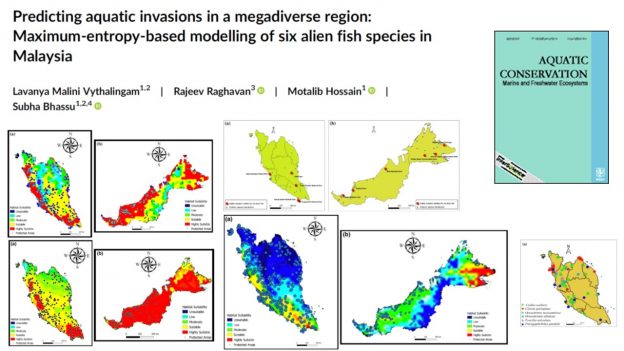Predicting Alien Life: Discovering New Non-Xenomorph Species On Earth

Table of Contents
What are Extremophiles and Why are they Important?
Extremophiles are organisms that thrive in extreme environments—conditions that would be lethal to most known life forms. These remarkable creatures challenge our understanding of the limits of life and hold significant clues for predicting alien life. Studying extremophiles helps us broaden our definition of what constitutes a habitable environment and opens up the possibilities for finding diverse life beyond Earth, drastically different from the often-depicted xenomorph archetype.
Types of extremophiles include:
- Thermophiles: Thrive in extremely high temperatures, often found in hydrothermal vents and hot springs. Examples include Thermus aquaticus, a bacterium used in PCR technology.
- Halophiles: Thrive in extremely salty environments, like the Great Salt Lake or the Dead Sea. Many archaea are halophiles.
- Acidophiles: Thrive in highly acidic environments, such as acidic mine drainage or volcanic areas. Examples include certain types of bacteria and archaea.
- Psychrophiles: Thrive in extremely cold environments, like the Arctic or Antarctic. These often include bacteria and algae adapted to freezing temperatures.
- Piezophiles (Barophiles): Thrive under extreme pressure, typically found in deep-sea environments. Many bacteria and archaea are found in these habitats.
The relevance of extremophiles to extraterrestrial life is immense. Their ability to survive in conditions previously thought uninhabitable suggests that life might exist on other planets in environments we previously considered lifeless. These non-xenomorph species demonstrate the incredible diversity of life and its capacity to adapt, expanding the parameters of our search for extraterrestrial life beyond the limitations of Earth-like conditions.
Exploring Extreme Environments on Earth: Habitats for Non-Xenomorph Species
Many extreme environments on Earth serve as natural laboratories for studying extremophiles and predicting alien life. These locations offer insights into the potential for life beyond Earth, emphasizing the incredible diversity of non-xenomorph life.
- Deep-sea hydrothermal vents: These underwater volcanic vents spew superheated, chemically rich water, supporting unique ecosystems teeming with chemosynthetic organisms—life that derives energy from chemicals rather than sunlight. The pressure, temperature, and chemical conditions in these vents are extreme, yet life flourishes.
- Subglacial lakes: Buried beneath massive ice sheets, such as Lake Vostok in Antarctica, these lakes are isolated and dark, yet microbial life has been discovered, showcasing the resilience of life in the face of extreme cold, darkness, and pressure. Discovering new species in these environments is a major focus of ongoing research.
- Acidic hot springs: These environments, often found in volcanic areas, possess extremely low pH levels and high temperatures, providing habitats for acidophilic extremophiles. These environments offer unique insights into the evolutionary adaptations required for survival in extreme acidity.
- High-altitude environments: The thin atmosphere, intense UV radiation, and extreme temperature fluctuations at high altitudes present significant challenges to life. Despite these difficulties, specialized plants and animals have adapted to survive in these harsh conditions.
Techniques for Discovering New Non-Xenomorph Species
Discovering new non-xenomorph species requires advanced techniques capable of detecting and analyzing life in extreme environments:
- Advanced microscopy: Techniques like electron microscopy allow scientists to visualize the intricate structures of extremophiles, revealing details about their adaptations to extreme environments.
- DNA sequencing: Metagenomics, a powerful technique utilizing DNA sequencing, allows researchers to identify and characterize microbial communities from environmental samples without the need to culture the organisms in a laboratory setting. This is crucial for studying extremophiles that are difficult to grow in the lab.
- Remote sensing technologies: Satellite imagery and other remote sensing technologies help researchers locate potential habitats for extremophiles, identifying areas with unique geological features or unusual environmental conditions.
- Deep-sea exploration vehicles: Remotely operated vehicles (ROVs) and other deep-sea exploration technologies are essential for collecting samples from deep-sea environments, such as hydrothermal vents and subglacial lakes, which are otherwise inaccessible.
The Importance of Protecting These Environments
Protecting the unique ecosystems where extremophiles thrive is crucial. These environments are fragile and vulnerable to human activities, including pollution, climate change, and habitat destruction. The loss of these habitats could mean the loss of undiscovered species and valuable insights into the limits of life, hindering our ability to predict alien life accurately. Responsible exploration and conservation efforts are essential to preserving these incredible resources for future scientific discovery. We must prioritize sustainable exploration practices to ensure that the pursuit of knowledge doesn't compromise the very environments we seek to understand.
Conclusion
Studying extremophiles is critical for predicting alien life and discovering new, non-xenomorph species. These organisms, thriving in extreme environments on Earth, demonstrate the incredible adaptability and diversity of life. By understanding their survival strategies, we can refine our search for extraterrestrial life, expanding the possibilities beyond our initial assumptions. Discovering new species in these challenging environments requires advanced technology and a commitment to responsible exploration and conservation. By studying extremophiles and exploring extreme environments, we can continue to predict alien life and discover truly fascinating non-xenomorph species. Learn more about these incredible organisms and support research dedicated to this exciting field! [Link to relevant research organization 1] [Link to relevant research organization 2]

Featured Posts
-
 Almanacco Del 10 Marzo Compleanni Santo Del Giorno E Proverbio
May 27, 2025
Almanacco Del 10 Marzo Compleanni Santo Del Giorno E Proverbio
May 27, 2025 -
 Alien Contact A Fight For Survival On Earth
May 27, 2025
Alien Contact A Fight For Survival On Earth
May 27, 2025 -
 Avrupa Merkez Bankasi Ndan Yeni Tarifelere Iliskin Uyari
May 27, 2025
Avrupa Merkez Bankasi Ndan Yeni Tarifelere Iliskin Uyari
May 27, 2025 -
 Ashton Kutcher And Mila Kunis Beverly Hills Appearance After Venice Project
May 27, 2025
Ashton Kutcher And Mila Kunis Beverly Hills Appearance After Venice Project
May 27, 2025 -
 Resume Du Match Laso Chlef Vs Usma Ligue 1 Algerienne Stade Du 5 Juillet
May 27, 2025
Resume Du Match Laso Chlef Vs Usma Ligue 1 Algerienne Stade Du 5 Juillet
May 27, 2025
